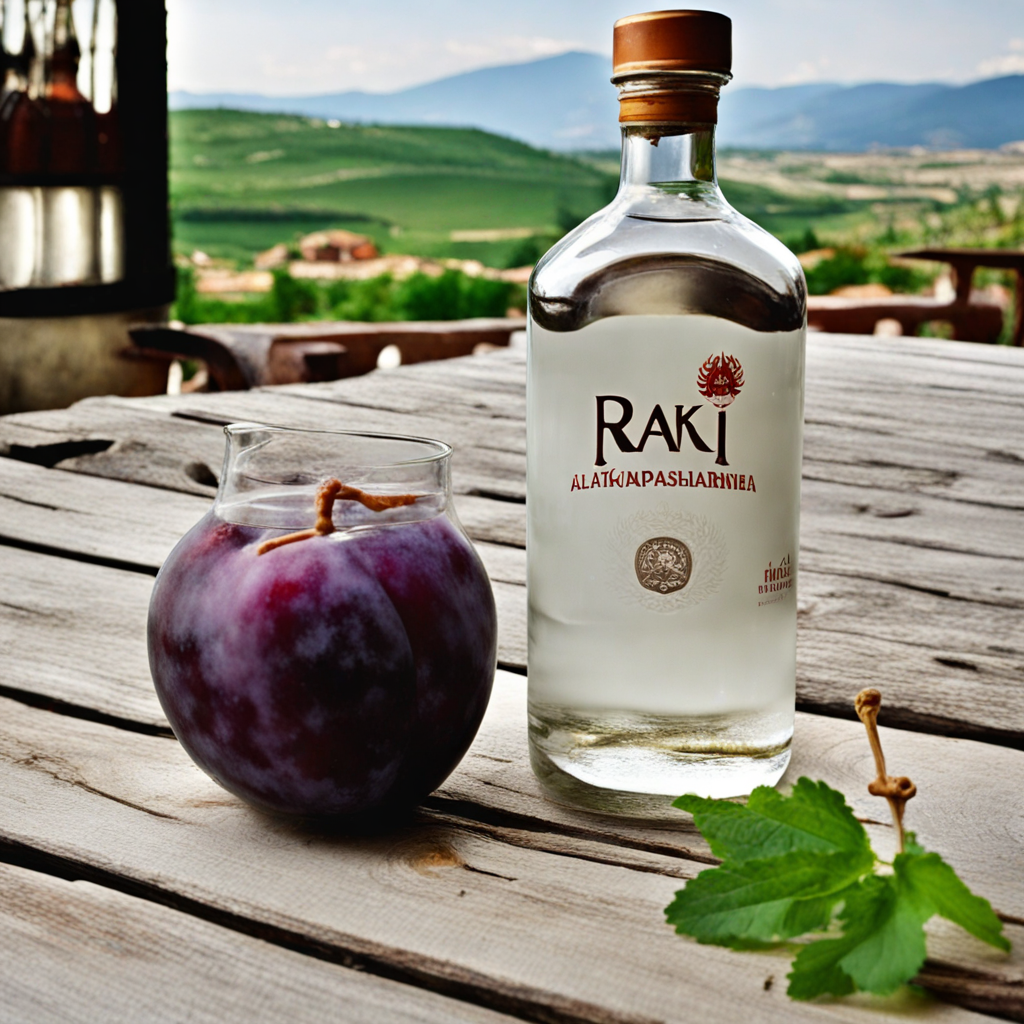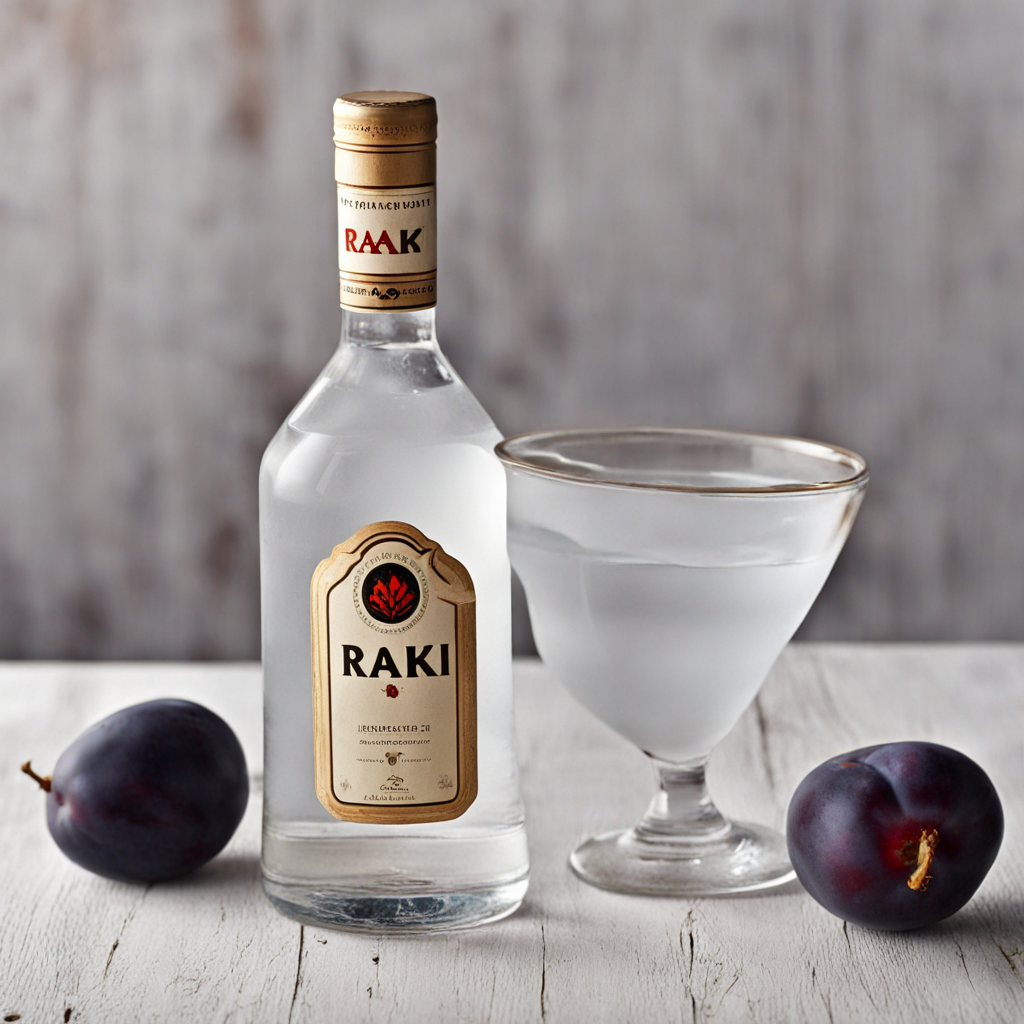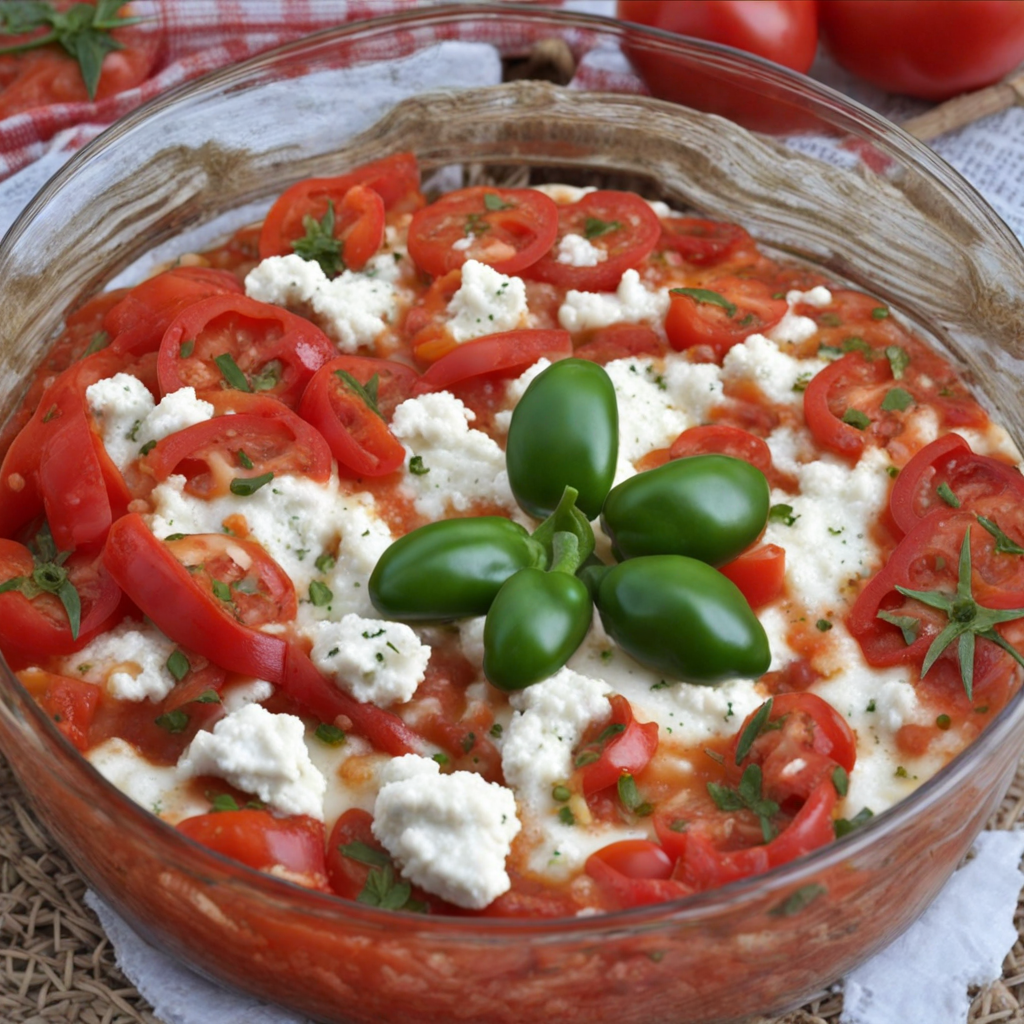Raki
Raki is a traditional Albanian beverage that captures the essence of the country's rich culinary heritage. This anise-flavored spirit is often made from distilled grapes or other fruits, giving it a unique and robust flavor profile that is both aromatic and refreshing. The drink is typically clear and has a slightly viscous texture, which enhances its mouthfeel. When served chilled, raki becomes a delightful companion for various dishes, enhancing the overall dining experience with its distinctive taste. In Albania, raki is more than just an alcoholic drink; it is a cultural symbol, often enjoyed during social gatherings and celebrations. It is common for locals to serve raki as an aperitif, accompanied by a selection of meze, which includes olives, cheeses, and cured meats. The aniseed notes in raki complement the savory flavors of these appetizers, creating a harmonious balance that invites further exploration of Albanian cuisine. The drink is known for its warming qualities, making it a perfect way to start a meal or toast to special moments with family and friends. As you delve into the world of raki, you may find that its taste evolves with each sip, revealing deeper layers of flavor that reflect the ingredients used in its production. While the traditional version is widely enjoyed, you may also encounter regional variations that incorporate different fruits or herbs, each adding their own twist to the classic spirit. Whether enjoyed neat or as part of a cocktail, raki is a delightful journey into Albanian culture, promising a taste experience that is both unique and unforgettable.
How It Became This Dish
The History of Rakı in Albania: A Journey Through Time and Culture Rakı, a traditional alcoholic beverage in the Balkans, particularly celebrated in Albania, has a rich and nuanced history that reflects the region’s complex cultural tapestry. Although often associated with Turkey, this anise-flavored spirit has woven itself into the social and gastronomic fabric of Albania, where it has evolved and adapted through centuries of history, war, and cultural exchange. #### Origins of Rakı The origins of rakı can be traced back to the Eastern Mediterranean region, with its earliest roots believed to lie in the process of distillation that began in the 10th century. While the drink itself is often linked to the Ottoman Empire, its precursors were likely produced in ancient Mesopotamia and later refined in the Byzantine Empire. The word ‘rakı’ is thought to derive from the Arabic word ‘raha,’ meaning “to relax” or “to ease.” In Albania, rakı emerged as a local adaptation of this broader tradition, gaining prominence during the Ottoman period, which lasted from the late 14th century until the early 20th century. The Ottomans brought with them the tradition of distilling spirits, and rakı became a staple in both the Ottoman court and among the common people. The infusion of anise into the drink, a practice that is still prevalent today, provided rakı with its distinctive flavor and aromatic profile. #### Cultural Significance Rakı is more than just a beverage in Albanian culture; it embodies hospitality, friendship, and the spirit of togetherness. It is often served as a gesture of welcome, enjoyed in social settings, and is an integral part of celebrations, family gatherings, and rituals. The act of sharing rakı is imbued with meaning, symbolizing connection and community. In traditional Albanian customs, rakı is typically consumed before meals, often paired with a selection of appetizers known as ‘meze.’ These can include a variety of cheeses, olives, and cured meats, which complement the drink's sharpness and enhance its flavor profile. The ritual of serving rakı is also notable; it is usually poured into short, narrow glasses, and it is customary to toast before drinking, often with the phrase “gëzuar,” meaning “cheers.” This emphasis on camaraderie and shared experiences has cemented rakı's place in Albania’s social fabric. #### Development Over Time As Albania underwent significant political and social changes throughout the 20th century, rakı's role and production methods also evolved. After World War II, the country fell under communist rule, leading to a period of isolation. During this time, state-owned distilleries produced rakı on a larger scale, standardizing its flavor and quality. The drink became emblematic of national identity, particularly as it was often marketed as a symbol of resistance and resilience against foreign influences. In the post-communist era, particularly in the 1990s and early 2000s, Albania experienced a cultural renaissance. The country opened up to the world, and the home distillation of rakı, known as ‘raki’ or ‘rakija,’ became increasingly popular. Many households began to produce their own versions of rakı, often using local ingredients and traditional methods. This grassroots movement not only revived local recipes but also reinforced the drink’s cultural significance, as families passed down traditions through generations. Additionally, the craft beverage movement that has taken hold globally has found its way to Albania. Small-scale producers and distilleries have emerged, experimenting with different flavors, ingredients, and production techniques. These new interpretations of rakı are often infused with local herbs, fruits, and spices, reflecting the diverse agricultural bounty of the country. This modernization of rakı production has given rise to a new appreciation for the beverage, not just as a spirit, but as a craft product worthy of exploration. #### Rakı in Modern Albania In contemporary Albania, rakı continues to thrive as a beloved traditional drink, enjoying both local and international acclaim. It is commonly found in restaurants and bars, where it is often included in tasting menus that showcase the rich culinary heritage of the region. Furthermore, the beverage is gaining recognition abroad, particularly among the Albanian diaspora, who seek to reconnect with their roots through the flavors of their homeland. Rakı festivals and events also celebrate this iconic drink, where producers gather to showcase their unique varieties, allowing consumers to explore different flavors and styles. These events not only promote local craftsmanship but also serve as platforms for cultural exchange, bringing together enthusiasts from various backgrounds to learn about the history and significance of rakı in Albanian culture. #### Conclusion The journey of rakı in Albania is a testament to the resilience and adaptability of cultural traditions. From its ancient origins to its modern-day interpretations, rakı has transcended mere consumption to become a symbol of Albanian identity, unity, and hospitality. Its rich history is interwoven with the stories of the Albanian people, reflecting their struggles, celebrations, and the enduring importance of community. As Albania continues to evolve, so too does its beloved rakı, ensuring that this traditional spirit will remain a central part of its cultural heritage for generations to come. Whether enjoyed in a bustling café, a quiet home, or at a festive gathering, rakı will always hold a special place in the hearts of those who cherish the bonds it helps to create.
You may like
Discover local flavors from Albania







